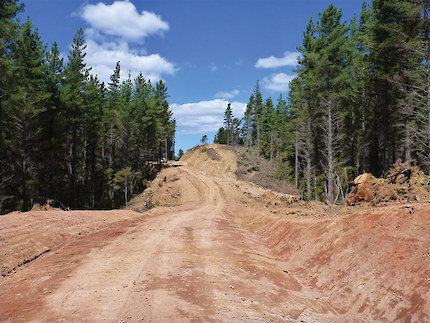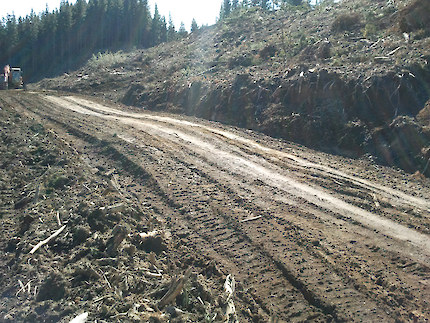Getting the final touches right before metalling makes a big difference. The road will be better for traffic, and metalling and maintenance costs can be reduced.

- The road has a good shape for shedding water
- Depressions and holes are removed
- Deep ditches will allow water to drain from both the surface and under the road

- The formation is not shaped to the final road shape
- Metal will need to be used to fill in the hollow
- Metal is expensive and can be in short supply

- Shaping was done with a grader or tilt bucket
- Culverts were installed before metalling – the culvert markers are visible

- Poor formation shape and shallow water tables led to this steep road section failing
- The failure stopped cartage and caused operational disruption
- Corduroy with logs or slash is a temporary fix